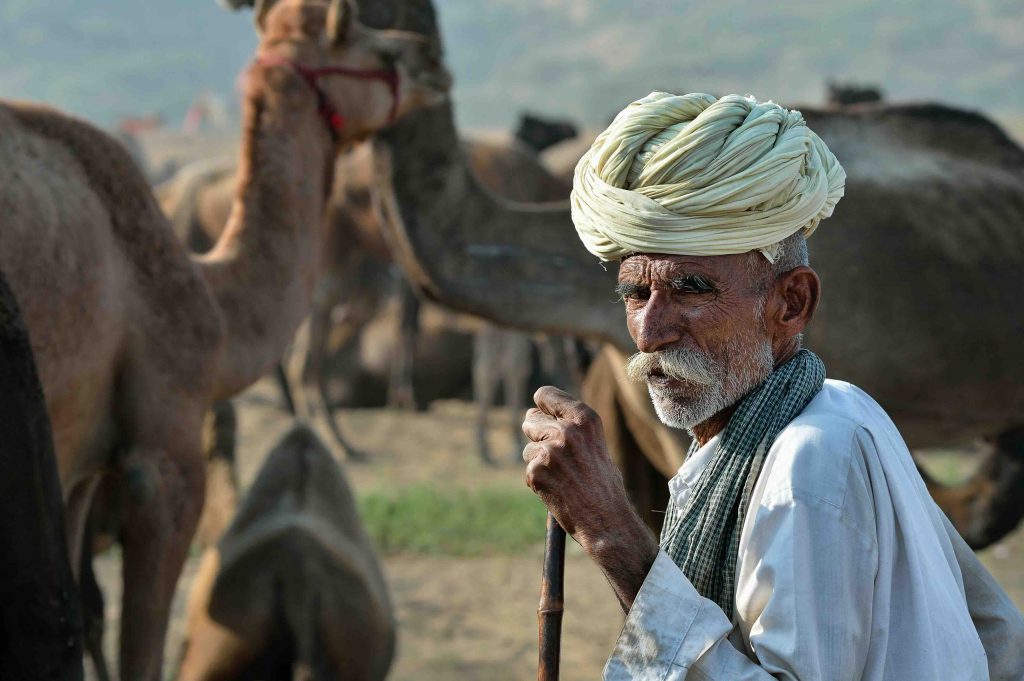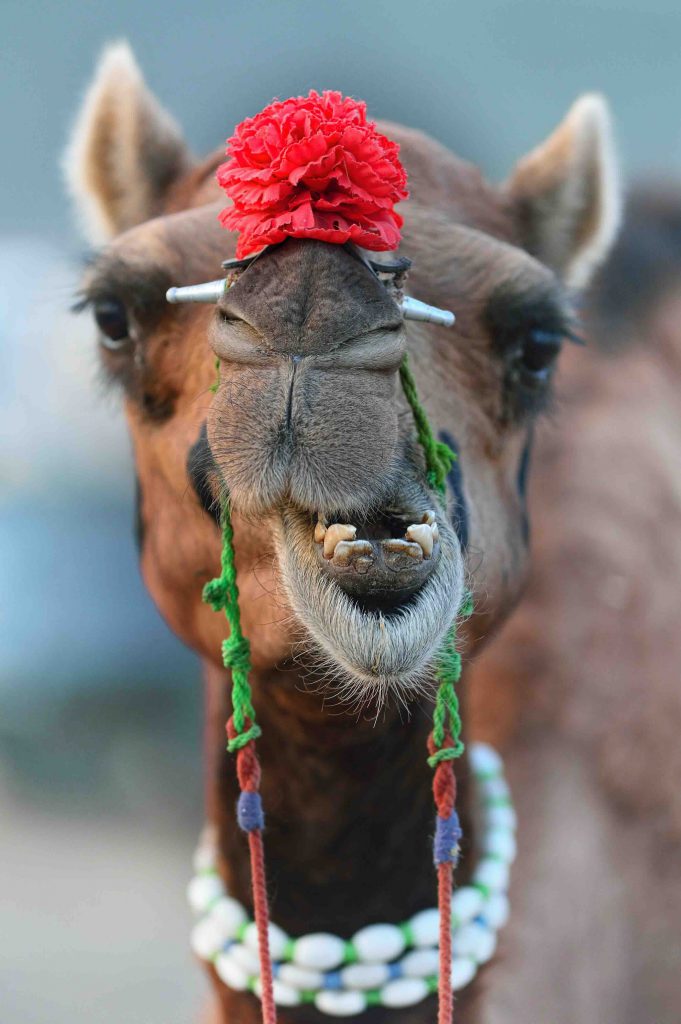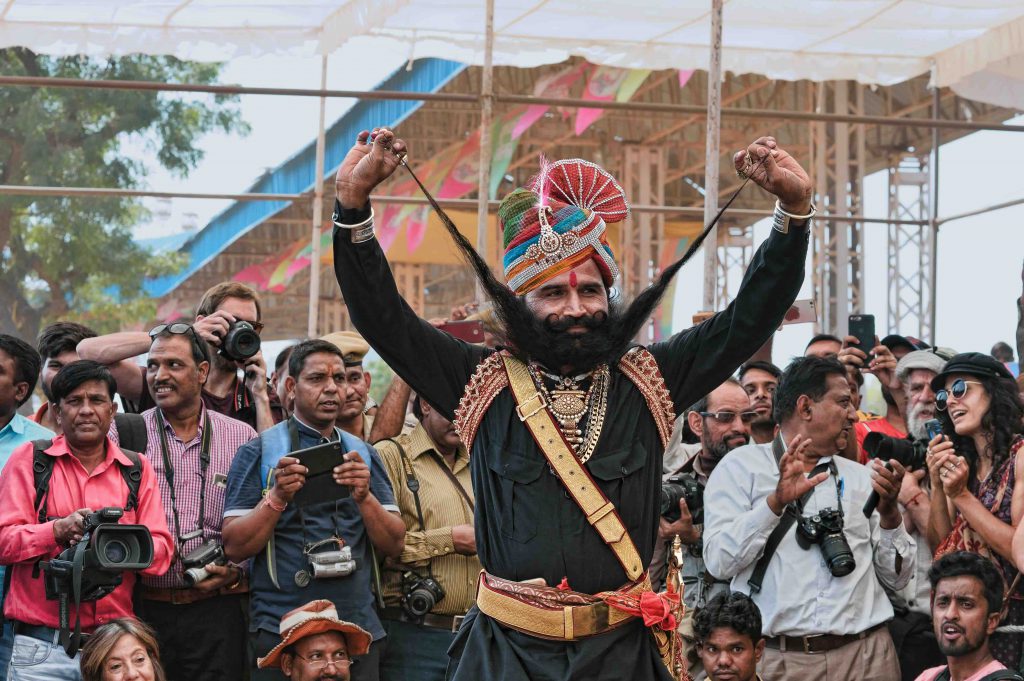Story by Ly Hoang Long
More than half of India’s largest state, Rajasthan, is home to nearly 80% of the country’s camel population. Each year, the state’s arid landscape becomes the stage for the most anticipated event of the region’s nomadic communities: the Pushkar Camel Fair, or Pushkar Mela.

Held annually for one week, usually from late October to early November according to the Hindu calendar, the fair draws herds of camels that travel hundreds of kilometers across the desert. From 10,000 to 30,000 camels may attend, depending on the year. What began as a simple marketplace where herders traded camels after a year of roaming has grown into one of India’s most colorful cultural and spiritual festivals.
For Hindu devotees, the fair also marks the start of the pilgrimage season to sacred Pushkar Lake, one of the few places in India with a temple dedicated to Lord Brahma. Pilgrims gather here to bathe in the lake’s waters, a ritual believed to cleanse body and soul.
Festivities are centered in the Mela Ground Stadium, with stalls devoted to food, agricultural and household goods, jewelry, and above all, colorful accessories for camels. The event’s highlights include competitions for the best-decorated camels and camel-handling performances – spectacles of skill and artistry.

Being new to nomadic life, I was initially thrilled to see a handful of camels scattered across the desert. Following a dusty, cactus-lined track, I was soon overwhelmed by the sight of tens of thousands of camels marching across the desert valley, their silhouettes blurred by clouds of dust.
The solemn sounds of camels calling out to each other and the hushed tones of bargaining voices contrasted with the vibrantly decorated fairground. Gone were the dazzling multicolored saris; instead, the desert wore only three colors: the gold of sand, the brown of camels, and the white of their handlers’ simple garments.
Only by spending a night in the desert can visitors grasp the resilience of these nomadic people. The temperature dropped from 34°C by day to only 16°C at night. Groups of three to five people huddled around lit campfires, passing the night with just two tarps, one set on the sand and the other used as a blanket. At 4 a.m., they awoke to stir the fire’s embers back to life and make tea. Each person had their own small copper teapot, a constant companion used to brew Masala Chai – India’s traditional milk tea. Once tasted, its fragrant blend of black tea and spices is never forgotten.

Modern life has impacted the camel trade. Each year, sales diminish, and herders pack up early to return home. Processions of camels trudge back across the desert, leaving plumes of dust behind them, even as the Pushkar Camel Fair continues its riot of sound and color, echoing across the desert plains.
Pushkar Mela is much more than a livestock market. It blends culture, spirituality, and commerce, forming a living heritage of nomadic life. Here, the threads of traditional India intertwine with a country in motion, both jubilant and nostalgic.
This year’s Pushkar Camel Fair will be held from November 9-17, 2025.










